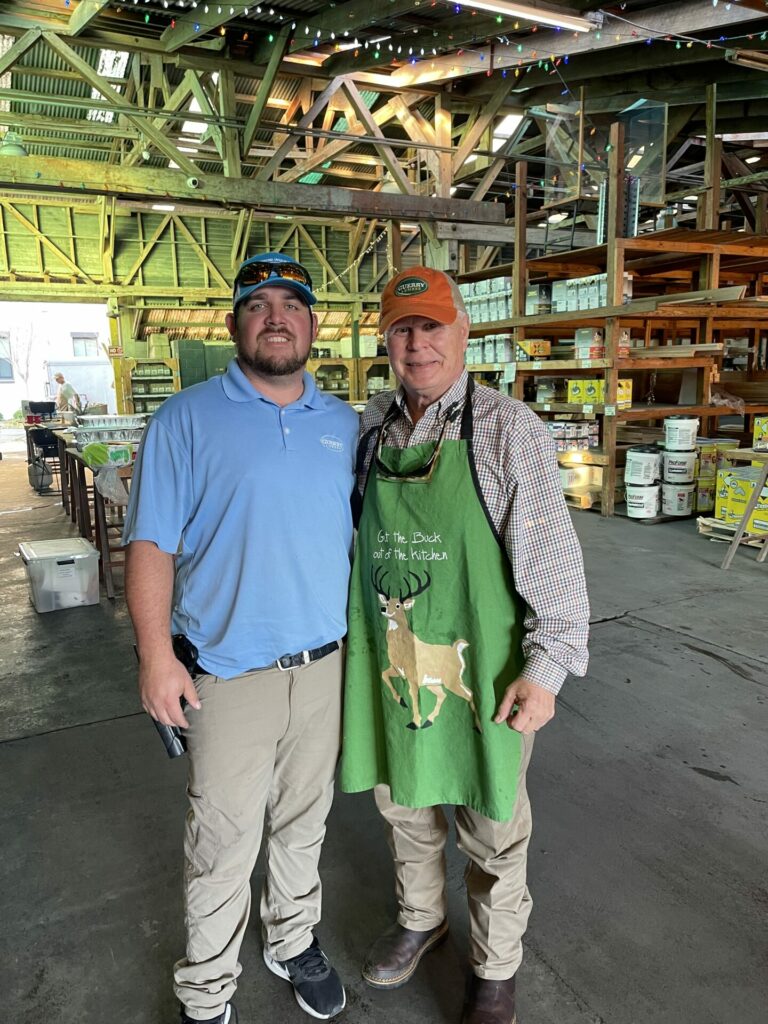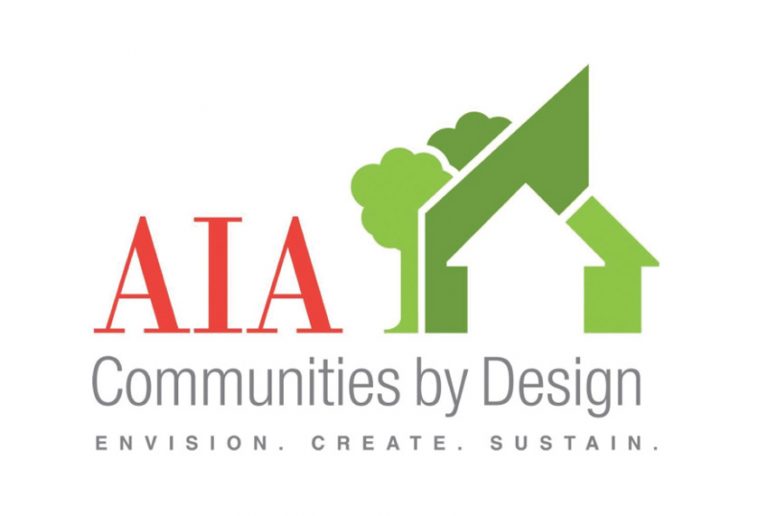Georgia’s most abundant and sustainable natural resource provides a myriad of economic and environmental benefits.
June 28, 2021 by Mary Ann DeMuth
Next time you open a cereal box or retrieve a cardboard package from your front porch or pass a building under construction or check your cell phone or even take a breath, pause and consider that trees made it possible. Forestry impacts nearly every facet of our lives, and most of us don’t realize Georgia’s prominence in this vital industry.
“We’re the number one forestry state in the nation,” says Andres Villegas, president and CEO of the Georgia Forestry Association (GFA) and Georgia Forestry Foundation, “and that’s a combination of having the natural resources – the forests – as well as having the industry to convert trees into things we depend on every single day.”
Nurturing Land and Forests
Since the 1950s, forestland has been increasing in the state and more than 90% of it is privately owned by individuals, families and corporations. It’s Georgia’s ordinary citizens, like Lynda Beam and her grandson Will Wheat of the 2,000-acre TooHolly Farm in Screven County, whom we have to thank for tending most of our trees. The farm has been in the family since the early 1950s and five family members are currently its stewards.
“We have a caretaker who lives there, but Will, his parents and sister and I have done most everything on the farm for years,” Beam says. “We’ve burned and marked and planted. We do it all with a deep appreciation for God’s creation and our stewardship of it. We feel like we’re just using the land while we’re here – it’s not really mine, it’s the next generation’s.”
TooHolly Farm has hundreds of acres of mixed natural pine and hardwood forest. In addition, the family has planted about 200 acres of loblolly and longleaf pine. Beam says she has a passion for the latter because it creates habitats for a variety of animals.
Previously abundant in Georgia, longleaf pines declined in the 18th and 19th centuries as more communities and transportation routes were built. Deforested areas failed to reseed naturally, creating negative impacts on animal populations and ecosystems. By the late 20th century, the longleaf pine was recognized as the home of endangered species like the gopher tortoise and the red cockaded woodpecker, and landowners began efforts to preserve the trees. Beam says her family is working hard to rebuild the valuable ecosystem.
The long-term business goal at TooHolly Farm is to grow saw timber, which can be pine or hardwood that’s typically used in construction and utility poles. These trees have a 40- to 75-year lifespan and are much larger – and higher value – than those harvested at about 20 years old to be converted to wood chips or pulp. The earlier-harvested trees are often planted more densely for higher yield and are used to make products that don’t require as much strength, like paper and containerboard.
“It all depends on what you as a landowner want out of it,” says Wheat. “Nothing we do [at TooHolly Farm] is in high-production timber. We try and follow best management practices that are recommended by the state.” These include cutting out trees that are subpar or too crowded every few years, using prescribed burns to reduce forest-floor vegetation that competes for nutrients and planting at staggered intervals so the family has trees to sell at different times.
“Coming into the future, we will probably harvest something within every seven to 10 years,” he says, “so that gives us income.”
Corporations like Rayonier are also private timber landowners and follow many of the same management practices, just on a much bigger scale. According to Mark Hebert, Rayonier’s director of Eastern forest resources, the company owns nearly 700,000 acres in the state, making it the second-largest private landowner.
Rayonier plants about 10.9 million trees annually in Georgia and “we have about 2.4 million tons that we can harvest off the property in any given year,” he says. Pines occupy most of Rayonier’s acreage and are carefully managed. But hardwoods grow on about a third of the company’s land in hard-to-reach areas, swamps and wetlands that support many animal species. The hardwoods are harvested every 50 to 60-plus years, if at all.
“In the late 1990s, you saw a lot of companies start investing more into the reforestation and the lifecycle [of trees],” he says, “preparing the site really well, thinking about nutrition, thinking about spacing. There are so many things – R&D-type stuff – that we poured in a lot of resources to try to figure out. Putting those [resources] into the ground early is what gets you a healthy forest. And part of forest health is tree improvement. Finding the best naturally occurring families of trees will help with the growth rate. So you’re putting the best tree on the best acre.”
Technology is contributing to effective forest management, he says. “When you think about geographic information systems and inventory systems, everything’s digital. Everything’s in the cloud,” he explains. “I can go out to any of my acres in Georgia and I can use my cell phone and pull up a digital aerial photo of where I’m standing. All the characteristics of the soil, all the characteristics of the [tree] stands, everything is at my fingertips now. That’s how we manage, and we couldn’t do it without this digital platform.”
Along with keeping the trees healthy and controlling pests and diseases, Hebert is concerned with manmade challenges to the forestry industry, like whether the demand for timber products will remain high. “Having strong markets actually incentivizes landowners to maintain forestry acres,” he says. “Rayonier alone can’t keep the industry going. We have to have those other landowners. They actually grow the majority of the volume in the state.”
Beam worries about overurbanization and taxes discouraging smaller forest landowners from maintaining their timber. “The capital gains tax could double and that would cause devastation to a lot of private landowners who couldn’t continue to pay,” she says.
From Growers to Makers
As Georgia’s second-largest industry, forestry has been called the backbone of the state’s economy. There are more than 179 wood-product manufacturing facilities employing thousands of workers who help convert trees into more than 5,000 different products. Those products run the gamut from two-by-fours, plywood, poles, posts, panels and paper to specialty chemicals and recently, components for smartphone touchscreens.
Among the manufacturers buying timber from landowners is Graphic Packaging International (GPI). The company produces about 40% of the packaging we see in grocery stores from 90 facilities worldwide, including one in Macon. That plant was originally built in 1948 and its 300-acre site has benefited from ongoing capital investments. In 2017 the parent company invested $136 million in modernization efforts that have helped provide work for more than 500 employees in Macon.
According to Technical Services Manager Heather Dummitt, GPI Macon used to make brown linerboard – the cardboard used in corrugated boxes – but converted to white-coated containerboard in the late 1990s. Beverage industry giants are the primary customers for its daily output of 2,100 tons, most of which is used for beer and soft drink packaging.
“We have long-term contracts with a lot of growers,” she says. “Our wood basket is roughly 70 miles from a perimeter around Macon and we begin harvesting when the trees are about 18 years old. [The landowners] will do thinnings about every three years. The prime board goes to lumber and we take most of the thinnings.”
Once harvested, the trees, which are mostly yellow pine, go to a privately owned chipping mill next door to GPI Macon for processing. GPI Macon not only uses the chips to make containerboard, but also to power its operations.
“That’s the biomass material we use in the boiler now,” Dummitt says. “We generate enough energy that we are self-sustaining and at times we are able to sell back to the power grid, to Georgia Power. It has reduced our carbon footprint and we’re on renewable resources as opposed to fossil fuels.”
She says the GPI parent company is working to stay on the cutting edge of renewable resources for packaging, substituting forest products for plastics. “To meet the [packaging] demands and know that we are doing it in a sustainable way is very rewarding,” she says.
Along with plants like GPI Macon that produce paper products, Georgia’s 95 sawmills are primary buyers of timber. They use high-tech equipment to precisely cut the older and larger-diameter trees for use in building products and other markets that require the strongest, highest-grade lumber.
Atlanta-based Georgia-Pacific (GP) owns sawmills in Rome, Madison, Albany and Warrenton. The company originally built the Warrenton lumber facility in the early 1970s, but in 2019 it opened a new $135 million, 340,000-square-foot, state-of-the-art sawmill in the same location, increasing the number of workers to nearly 180.
“The facility receives about 185 truckloads of logs a day and can produce more than 350 million board-feet annually,” says Fritz Mason, president and general manager of GP lumber. That translates into nearly 60 trucks of lumber shipped every day to customers in multiple states.
“This is not your grandfather’s mill,” he adds. Advanced technology enables each log to be scanned then cut into lumber dimensions that are ideal for the end use, eliminating many tasks that in the past were manual and repetitive.
“The process is highly automated and optimized to produce the highest-value products that customers desire with virtually no waste. One operator sitting in a control room with computer monitors now does what several people did manually in the past. These ‘new’ jobs are more in line with the expectations of today’s workforce and help with overall [employee] retention.”
A Sustainable Future
From a business and an environmental standpoint, the idea of zero waste is integral to forestry in Georgia. The industry is committed to the sustainability of its resources and focuses much of its actions on preserving land, wildlife habitats and water.
“We want to help ensure that forests remain abundant and diverse and continue to provide both the wood that’s used to make products, but also provide the ecosystem services our society relies upon – things like clean air and clean water,” says John Mulcahy, GP vice president of sustainability. “It’s important when we are sourcing wood for our operations that we do so responsibly and for the long term.”
Even though companies are harvesting wood in greater amounts these days, GFA estimates 48% more trees are being planted than removed, with private landowners annually planting 21 trees for each Georgia resident. That amounts to somewhere between 200 to 300 million trees a year, says Villegas.
Many people don’t realize that each tree “provides enough oxygen for two people in the year,” he says. “So if you think about that, the state of Georgia alone is providing enough oxygen for every person in the entire United States.”
In addition, the state’s forests capture and filter about 65% of Georgia’s water before it hits the reservoirs and rivers, and about 6 million Georgians depend on that process, he says.
And, “forests are absorbing about 23% of the fossil fuel emissions in the state,” he adds, “basically offsetting all the emissions from the cars that are driven every day in Atlanta.”
Since 2004, the state has had a voluntary Carbon Sequestration Registry administered by the government’s Georgia Forestry Commission to provide forest landowners, municipalities and public and private entities with an official mechanism for documenting carbon sequestration. The goal of carbon sequestration is removing carbon dioxide from the air to help mitigate climate change. The abundance of Georgia’s trees provides significant opportunities to become part of the carbon – or circular – economy aimed at eliminating waste and promoting reuse of resources.
This year’s passage of HB 355 by the Georgia General Assembly creates a framework to allow developers to be added to the registry to receive carbon credits when they use materials that sequester carbon, like wood, carbon-infused concrete and carbon-neutral flooring products.
“Using wood products, especially products that we call mass timber, can reduce the carbon footprint by about 60% compared to [building with] steel and concrete, Villegas says.
Then, there’s preservation of wildlife habitats. He says Georgia is the sixth most biologically diverse state in the nation and our rich wildlife habitats depend on well-managed forests.
“If you look at the biggest thought leaders, everyone is pointing to forests as being the solutions for some of the biggest challenges that we have,” he says. “Whether that’s helping to solve the climate challenges or having a more circular economy; whether that’s having rural jobs and a more vibrant rural economy, Georgia may be the state that has the most to benefit. That means we can continue to be in a position of prominence in this industry for the next 100 years.”
Georgia Forestry:
By the Numbers
No. 1 in the U.S. for:
• Privately owned timberland (22 million acres)
• Yearly harvest volume (1.2 billion cubic feet)
• Exports of forest products ($4 billion)
• Seedling production for reforestation (331 million)
$36.5 billion annual economic impact
141,214 direct and indirect jobs
83 counties have at least one wood-using mill
48% more wood growing than harvested annually
1,500+ loggers trained through Sustainable Forestry Initiative programs
21 trees per Georgia resident planted each year by private forest landowners
18 million tons of carbon absorbed annuallySource: Georgia Forestry Association
This article appears in the July 2021 issue of Georgia Trend.






